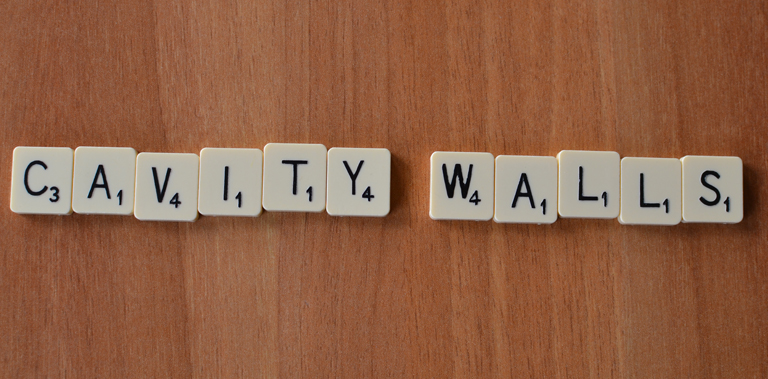
What Are Cavity Wall Ties?
Wall ties are an unseen component found in cavity walls. The wall ties – which are sometimes referred to as ‘brick ties hold the internal and external walls. Wall ties have actually been used in construction methods since the 1800’s and by the 1945 had become a standard part of cavity wall construction which was the method used for most houses as it was proven that homes with cavity walls were warmer and drier.
Since then, filling the cavity wall with insulating material has become an increasingly popular way to conserve heat within the home. Just because wall ties are invisible from the exterior of a building, it does not mean that they are not crucially important!
Wall ties are fitted during the construction of the cavity wall and hold the outer and inner walls – or ‘leaves’- together. Wall ties play a vital role in the stability of a building and by joining the outer and inner leaves together they ensure that the walls act as a homogeneous unit.
Poorly installed wall ties that have not been installed to the correct density and pattern can lead to severe structural problems. Wall ties are made from metal that is both non-corrosive and fire retardant and have a special water resistance that helps prevent moisture reaching the inner leaf of the building from outside.
The wall ties are inserted during the construction of the two leaves at regular intervals and the ends of the wall ties are embedded in the mortar of both leafs at regular intervals to a depth of 62-75mm, Wall ties can be used for cavity walls made from brick, timber and steel. Today, cavity walls are being built wider so that they can accommodate thicker insulation as energy efficiency improves.
Modern cavity walls vary in depth from 50- 450mm and it is crucial that the correct wall ties are used. The wall ties much be carefully inserted at the correct density and the minimum density as defined in Eurocode 6 is 2.5 ties per square metre. Additional ties must also be installed around openings and unbounded edges.
Cavity Wall Ties Design
The design of the wall ties has evolved over the years. In the early days they were made in terracotta, wrought iron or cast iron but later, galvanised mild steel became the preferred metal, but it was soon discovered that this was not a good choice as it was found to start corroding after about 15 years – although it had been hoped that it would last the lifetime of the building. Since the early 1980’s, walls ties have been used that comprise of a triple zinc coating on a stainless steel tie and this composition is approved by British Standards.
The latest design of wall tie has been found to work exceptionally well as the ties expand within the wall cavity and deal well with changes in the outside temperature and this has been found to protect the stability of the structure. Additionally, the wall ties help to prevent water seeping through the outside leaf and reaching the inner leaf. A number of construction companies are now using wall ties that are made from other composite materials.
The latest generation of wall ties has proven to be beneficial as the outer leaf (wall) tends to be taller and thinner in design, whereas the inner leaf is the load-bearing wall and is well supported. The wall ties have an important role to play as they give the outer leaf greater stability.
Cavity Wall Ties Installation and Problems

Sometimes there can be problems that can be traced to the wall ties and these are usually problems due to age or because they were not installed properly when the building was originally constructed. Sometimes these problems can be exacerbated further if there is a dampness problem in the cavity wall.
The main thing is that the problem must be pin pointed and dealt with promptly. Luckily there are visible signs that indicate that there could be a problem with wall ties and these can be spotted if you make a regular inspection of your property, Look for any cracks appearing in the mortar either vertically or horizontally.
Look for any tell-tale bulging in the brick work or if the lintels are lifting or dropping. Inside you might spot that the skirting board near the problem area is staining or actually lifting and moving. If the problem is not dealt with promptly, unfortunately it will only get worse and there is a danger that the outer wall will eventually collapse.
Once you suspect that there could be a problem, it is best to get professional help swiftly to evaluate the problem. Cavitech-UK is a Sussex based company that operates nationwide and specialises in cavity wall installation and replacement. To establish whether there is a problem with the wall ties, cavity wall engineers will make holes in the outer leaf and use a borescope to establish the level of the problem.
A metal detector is then usually used to locate the wall ties and if it is felt that they are not working adequately well, the old ties will not necessarily be removed, but new ones will be inserted at regular intervals and in accordance with British standards. For peace of mind for the home owner, all such restoration work is guaranteed and there is the knowledge that it has been a job well done.
